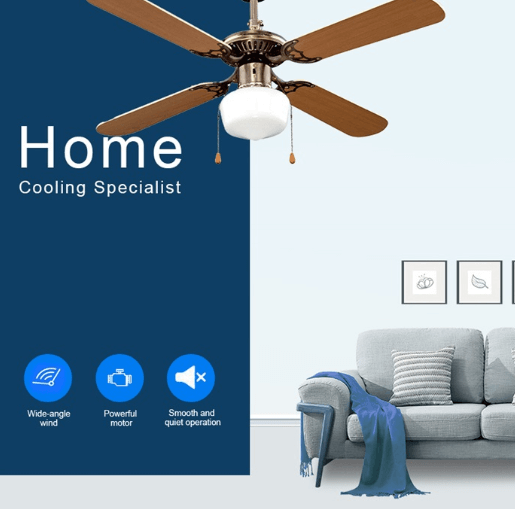What Are the Pros & Cons of Investing Ceiling Fan with Remote?
With the frequent changes in the house design trend, indoor ceiling fans also get developed to meet the various design requirements. Then, the ceiling fan with remote is one of the best versions of the ceiling fan. Installing the ceiling fan with remote is worth it because it makes the ceiling fan speed adjustment easier.
Although the ceiling fan with remote is worthy investing in, you still need to evaluate whether the ceiling fan with remote is suitable for your house layout, because it has some benefits and drawbacks.
What Are the Pros of Investing Ceiling Fan with Remote?
Before installing the ceiling fan with remote, you need to know whether the ceiling fan with a remote can benefit you. Here are the main benefits of the ceiling fan with a remote.
Convenience
One of the most significant benefits of a ceiling fan with remote is the convenience it offers. Remote-controlled ceiling fans provide an easy way to adjust the fan’s settings without having to get up or use a wall switch. This convenience is particularly useful for those who want to change the fan speed or turn it on/off without leaving their seat.
Customization
A typical ceiling with remote comes with multiple speed settings, direction options, and light controls. This allows you to tailor the fan’s operation to your specific comfort and energy-saving needs. With the simple remote controller, you easily adjust the level of the air ventilation, from breeze to strong airflow.
Timers and scheduling
These modern ceiling fans usually are designed with timer and scheduling features, allowing you to set the fan to turn on or off at specific times. This can be beneficial for energy savings, as you can ensure the fan runs only when needed.

Decorative Ceiling Fan with Remote
Accessibility
Ceiling fans with remotes are a practical option for individuals with mobility issues or those who have difficulty reaching high-mounted fan switches. The remote provides an accessible way to control the fan from a distance.
Aesthetics
Many ceiling fans with remotes have sleek and good designs, which can enhance the overall aesthetics of your living space. The decorative ceiling fan with remote is the best example. This type of ceiling fan has an elegant appearance and contains modern technology features.
Quiet operation
High-quality ceiling fans with remote controls often have quiet motor technology, ensuring that the fan operates silently and doesn’t disrupt your indoor environment. Bowin’s ceiling fan with remote presents this feature very well, because it adopts a good AC motor as the airflow source.
What Are the Cons of Investing A Ceiling Fan with Remote?
However, you also need to know the ceiling fan with remoter has some drawbacks. Before investing in a ceiling fan with remote, you should evaluate whether you accept its drawbacks.
Initial cost
Ceiling fans with remote controls tend to be more expensive than basic ceiling fans without remote functionality. If you’re on a tight budget, this upfront cost may be a deterrent.
Remote loss or malfunction
If the remote control is lost or malfunctions, it can be inconvenient and costly to replace. Some models may have limited availability for replacement remotes, and programming a new remote can be a hassle.
Battery replacement
Remote controls require batteries, and these batteries need to be replaced periodically. Depending on usage and the number of fans with remotes in your home, this ongoing expense can add up over time.

Interference and signal issues
In some cases, remote signals can interfere with other electronic devices or experience signal disruptions, leading to unreliable operation. It’s essential to test the remote’s reliability in your specific environment.
Limited range
The range of a ceiling fan remote control may be limited, which means you may need to be within a certain distance for it to work effectively. This limitation can be frustrating if you want to control the fan from a distance.
Compatibility issues
Some ceiling fan remotes may not be compatible with certain fan models or brands. It’s essential to ensure that the remote is designed to work with the specific fan you own.
Complexity for some users
While remotes can offer convenience, they may be confusing or difficult to use for individuals who are not tech-savvy or those who prefer a straightforward wall switch. Guests may also find it challenging to use unfamiliar remote controls.
Limited control during power outages
Ceiling fan remotes typically do not work when the power is out, so you may lose control of the fan during outages. In contrast, some traditional fans with wall switches can still be operated manually in this situation.
Conclusion
Last but not least, it is worth it to buy a ceiling fan with remote for your property, because it overcomes the drawbacks of the traditional ceiling fan and provides the users with the convenience in operation.
Bowin is a manufacturer of indoor outdoor ceiling fan and sells a full collection of ceiling fans.





Leave a Reply
Want to join the discussion?Feel free to contribute!